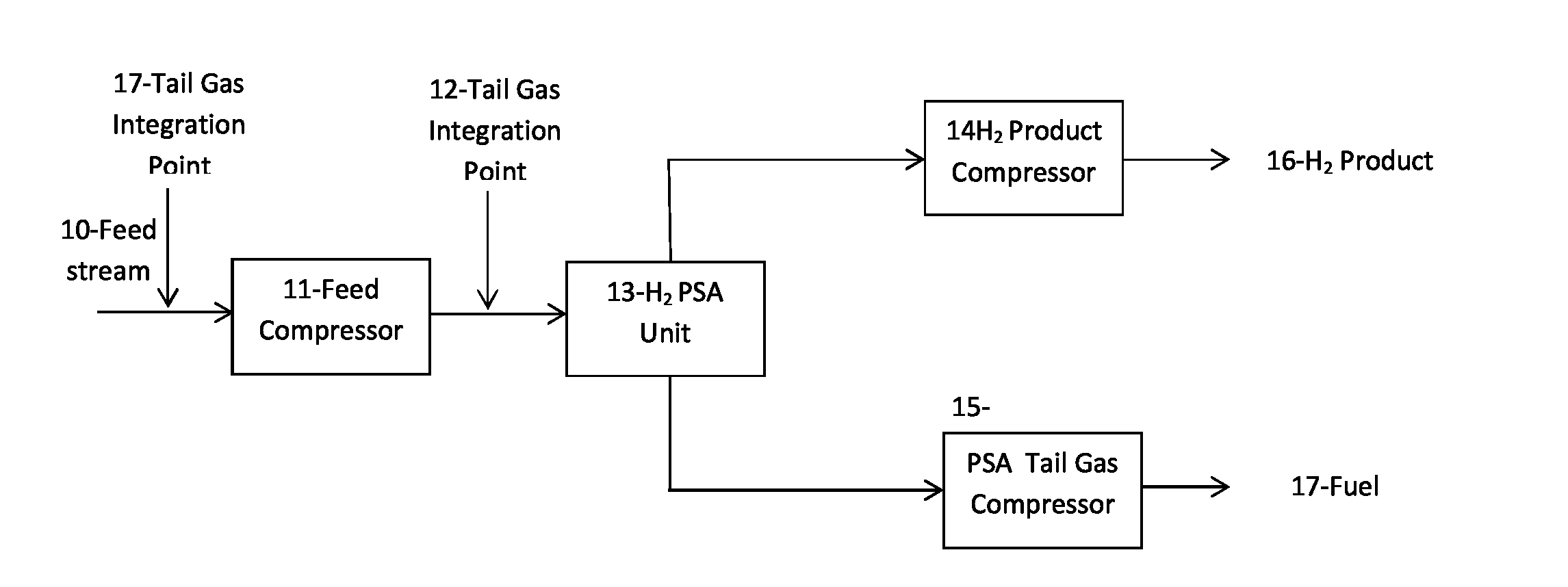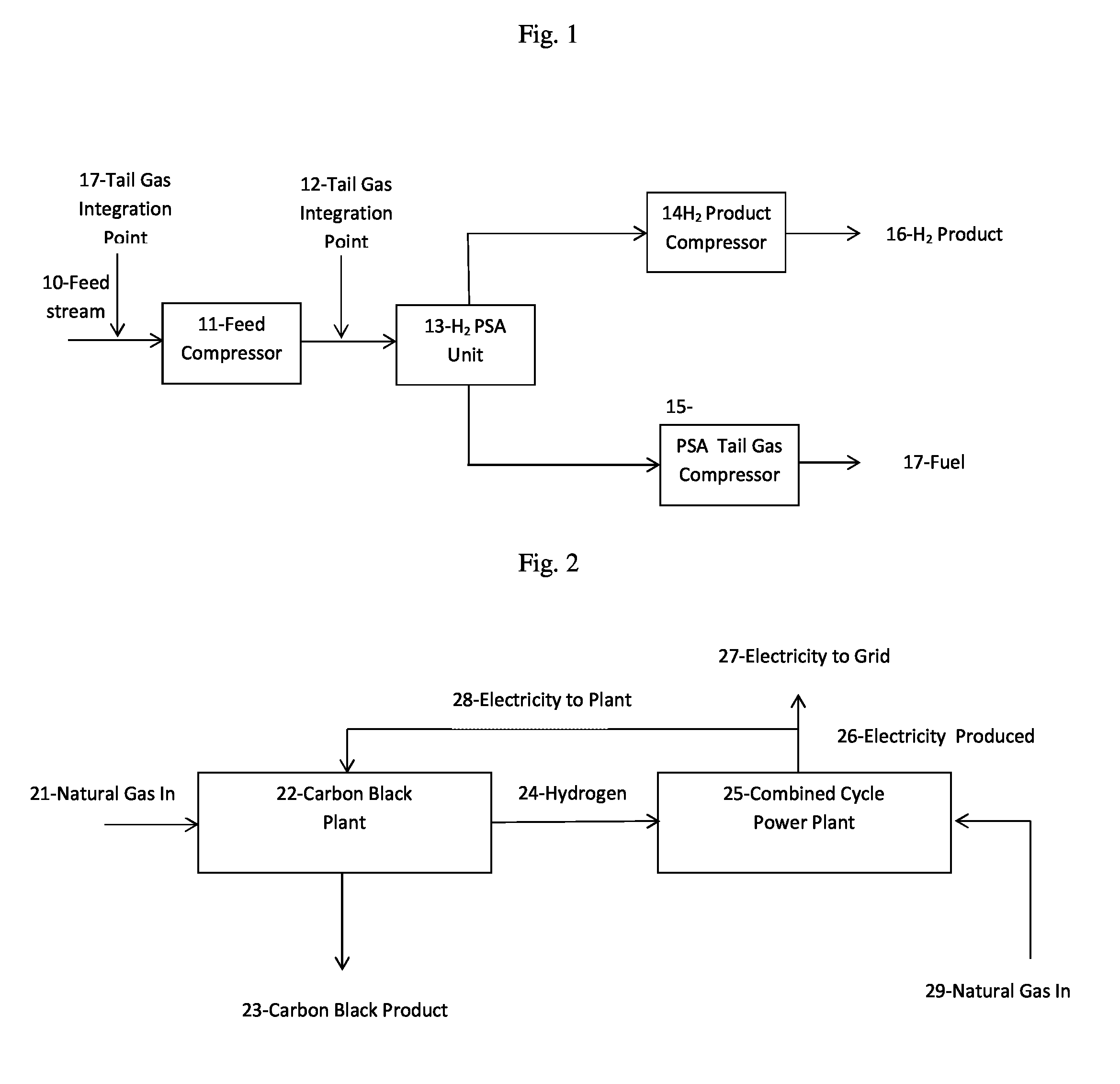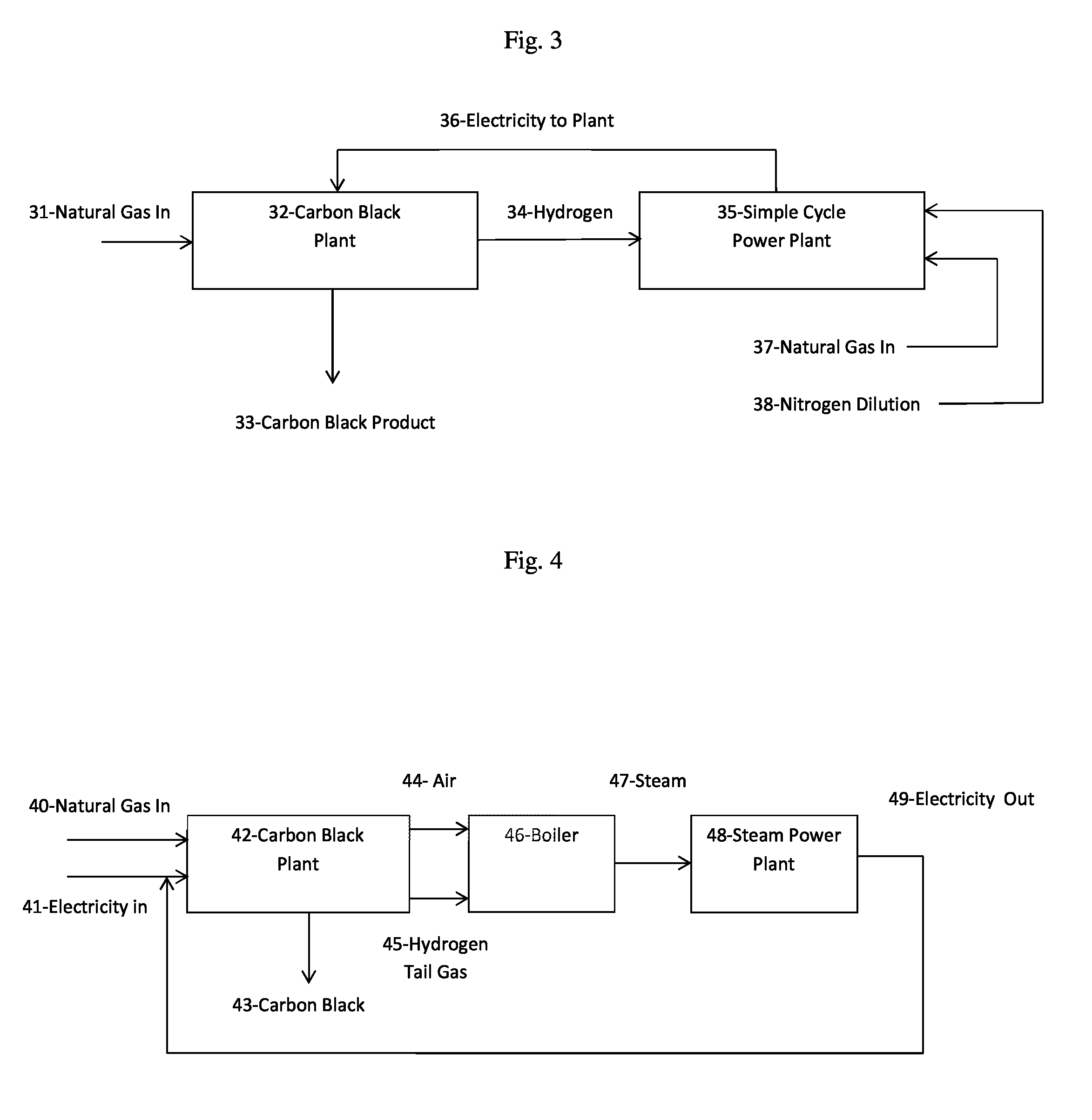Integration of plasma and hydrogen process with combined cycle power plant, simple cycle power plant and steam reformers
a plasma and hydrogen technology, applied in the direction of machines/engines, mechanical equipment, separation processes, etc., can solve the problems of increasing raw material costs and energy resources, which are a substantial part of the cost of most if not all manufacturing processes, and achieve the effect of reducing coal consumption and reducing net air emissions
- Summary
- Abstract
- Description
- Claims
- Application Information
AI Technical Summary
Benefits of technology
Problems solved by technology
Method used
Image
Examples
example 1
[0032]As shown schematically in FIG. 1, a feed stream (10) of 70.000 million standard cubic feet per day (MMSCFD), of hydrogen at 97.49% purity, 10 pounds per square inch gauge (psig), 100° F., 973.1 million British thermal units (MMBTU) higher heating value (HHV / hour), and 824.4 MMBTU lower heating value (LHV / hour) was flowed into a feed compressor (11) at 2×7000 NHP (Nominal Horse Power Flow rate=70 MMSCFD). At this point the tail gas (12) from a carbon black production plant is added to the compressed stream prior to it entering into the PSA unit (13). It should also be noted that it is not required that there be a feed stream and an additional tail gas stream. The feed stream can be just the tail gas from a plasma process stream and added at the front end of the system (17). The tail gas properties are shown in the Table below.
TABLEFlowrateMMSCFD70Pressurepsig10Temperature° F.100Molecular Weightgrams / mole2.53HydrogenMol %:97.49%NitrogenMol %:0.20%Carbon MonoxideMol %:1.00%Methan...
example 2
[0034]FIG. 2 shows schematically natural gas (21) with the following properties—1750.0 BTU / hour, 34.5 tons / hr.—going into the carbon black generating plant (22) with the following properties—electrical efficiency 7 megawatts per hour per ton (MW / hr / ton), feedstock efficiency 70 MMBTU / ton, carbon black production 200,000 tons / year and 25.00 tons / hour—generating carbon black (23) and hydrogen (24) with the following properties—1038 MMBTU / hour, and 9.5 tons per hour. The hydrogen is flowed into a combined cycle power plant (25) with the following properties—heat rate fuel 6500 BTU / kilowatt hour (KWh), heat rate steam 8500 BTU / KWh—producing 1157.6 megawatts (MW) of electricity, (26) 553 MW of which is flowed into a grid (27) and 175.0 MW (159.7 from hydrogen, 28.7 from steam, and 13.4 MW excess needed / produced) which is flowed back into the carbon black generating plant (22). Natural gas (29) with the following properties—6300 MMBTU / hour—is also flowed into the combined cycle power plan...
example 3
[0035]As shown schematically in FIG. 3, natural gas (31) with the following properties—1,750.0 MMBTU / hour, 34.5 tons per hour (tons / hr)—going into a carbon black generating plant (32) with the following properties—electrical efficiency 7 MW / hr / ton, feedstock efficiency 70 MMBTU / ton, carbon black production 200,000 tons / year and 25.00 tons / hour, with a carbon dioxide reduction of 322,787 tons per year, and a total feedstock efficiency of 87.5 MMBTU per ton—generating carbon black (33) and hydrogen (34) with the following properties—1050.0 MMBTU / hour, 9.5 tons / hr, 106,991 Nm3 / hr (normal meter, i.e., cubic meter of gas at normal conditions, i.e. 0° C., and 1 atmosphere of pressure). The hydrogen is flowed into a simple cycle power plant (35) with the following properties—heat rate fuel 8500 BTU / KWh—producing 175.0 MW of electricity (36) (123.5 from hydrogen, 51.5 from natural gas) which is flowed back into the carbon black generating plant (32). Natural gas (37) with the following prop...
PUM
| Property | Measurement | Unit |
|---|---|---|
| pressure | aaaaa | aaaaa |
| electrical efficiency | aaaaa | aaaaa |
| electrical energy | aaaaa | aaaaa |
Abstract
Description
Claims
Application Information
 Login to View More
Login to View More - R&D
- Intellectual Property
- Life Sciences
- Materials
- Tech Scout
- Unparalleled Data Quality
- Higher Quality Content
- 60% Fewer Hallucinations
Browse by: Latest US Patents, China's latest patents, Technical Efficacy Thesaurus, Application Domain, Technology Topic, Popular Technical Reports.
© 2025 PatSnap. All rights reserved.Legal|Privacy policy|Modern Slavery Act Transparency Statement|Sitemap|About US| Contact US: help@patsnap.com



